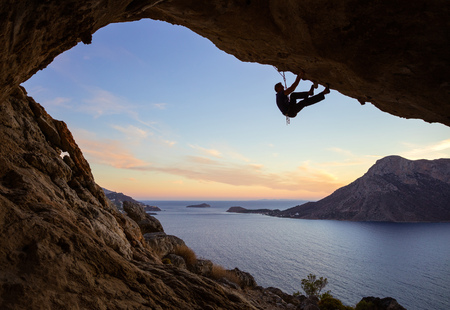1. Importance of GPS Device Durability for Outdoor Adventures
When it comes to outdoor adventures in the US, whether youre hiking in the Rockies, backpacking through the Appalachian Trail, or exploring the deserts of Arizona, having a durable GPS device is absolutely essential. American trails and backcountry routes can throw all sorts of challenges your way—from sudden rainstorms to rocky terrain and even freezing temperatures. That’s why durability isn’t just a nice-to-have; it’s a must for anyone who relies on their GPS for safety and navigation.
Why Durability Matters
Outdoor environments are unpredictable. A sturdy GPS device ensures you stay on track even if you accidentally drop it while climbing over rocks, get caught in a downpour, or face extreme heat or cold. For hikers, backpackers, hunters, and anyone spending serious time outdoors, a tough GPS can be the difference between getting lost and making it home safely.
Common Hazards Faced by Outdoor Enthusiasts
| Hazard | Example Scenario | Impact on GPS Device |
|---|---|---|
| Drops & Falls | Slipping on a muddy trail or dropping your pack | Cracked screens, internal damage |
| Water Exposure | Splashing while crossing streams or sudden rainstorms | Short circuits, malfunctioning buttons |
| Extreme Temperatures | Campsites below freezing or desert hikes in summer | Battery drain, display issues |
| Dirt & Dust | Trekking through sand dunes or dusty trails | Clogged ports, reduced button sensitivity |
The American Wilderness Demands Tough Gear
The United States is home to some of the most diverse and challenging landscapes in the world. From Alaskas icy tundra to Utahs red rock canyons, every environment demands gear that can keep up. That’s why so many US outdoor enthusiasts look for GPS devices with rugged exteriors, waterproof ratings (like IPX7 or IP68), and shock-proof construction. Whether you’re planning a weekend hike or a thru-hike across multiple states, choosing a durable GPS gives you peace of mind—and helps keep your adventure on track.
2. Drop Resistance: Handling the Accidental Bumps and Falls
Common Drop Scenarios on American Trails
If you’ve ever hiked, biked, or climbed across America’s rugged trails, you know how easy it is to drop your gear. Whether you’re scrambling up rocky switchbacks in the Rockies or navigating muddy slopes in the Appalachians, accidents happen. Your GPS device might slip from your hand while checking your location, get knocked off a backpack strap, or even tumble out of a pocket when you crouch down for a break.
Where Drops Happen Most Often
| Scenario | Trail Example | Typical Height of Drop |
|---|---|---|
| Slippery rocks by rivers | Yosemite National Park | 3-5 feet (1-1.5 meters) |
| Muddy slopes during rain | Appalachian Trail sections in Georgia | 2-4 feet (0.6-1.2 meters) |
| Packing/unpacking gear at rest stops | Zion National Park canyons | 2-6 feet (0.6-1.8 meters) |
| Biking over rough terrain | Moab mountain bike trails | 4-8 feet (1.2-2.4 meters), sometimes at speed! |
| Climbing and scrambling over boulders | Joshua Tree National Park | Varies, often 4+ feet (1.2+ meters) |
How Rugged GPS Devices Are Built to Survive Falls
The best GPS devices for outdoor use in the U.S. are engineered with durability in mind. Here’s how they’re designed to handle those accidental drops:
- Shock-Absorbing Casings: Many devices feature rubberized or reinforced plastic exteriors that cushion the impact if they hit rocks, roots, or hard ground.
- Tightly Sealed Construction: Buttons and screens are sealed tightly to keep out dust and water after a fall—even into puddles or streams.
- Reinforced Screens: The screens are often made with scratch-resistant glass or polycarbonate that can take a beating without cracking or shattering easily.
- Lanyard Attachments: Many American hikers use carabiners or wrist straps to reduce risk, but even when dropped, the devices are made to handle it.
- Impact Testing: Manufacturers test devices by dropping them from multiple heights onto various surfaces to make sure they keep working after accidental bumps and falls.
Pro Tip for U.S. Trail Users:
If you want extra peace of mind while exploring iconic places like Yellowstone or the Pacific Crest Trail, look for GPS devices labeled as “military standard” (often MIL-STD-810G) for drop resistance—that means theyve been put through some serious torture tests!
![]()
3. Waterproof and Flood-Ready Design
Understanding Waterproof Ratings for GPS Devices
When you’re out hiking, camping, or exploring the American wilderness, your GPS device is only as good as its ability to withstand water. That’s where waterproof ratings come in handy. Most outdoor electronics use the IP (Ingress Protection) rating system. The higher the number, the better protected your device is against dust and water. Here’s a quick guide:
| IP Rating | Protection Level | What It Means for You |
|---|---|---|
| IPX4 | Water splashes from any direction | Good for light rain or splashes |
| IPX7 | Immersion up to 1 meter for 30 minutes | Safe if accidentally dropped in a stream or puddle |
| IPX8 | Continuous immersion beyond 1 meter | Great for river crossings or heavy downpours |
Typical American Weather Hazards to Consider
The United States is known for its diverse weather—from Pacific Northwest rainforests to muggy Southern swamps and sudden Midwest thunderstorms. For outdoor enthusiasts, this means your GPS needs to be ready for anything. Sudden rain showers, muddy trails, and river crossings are common on popular trails like the Appalachian Trail or in national parks like Yellowstone and Yosemite.
The Importance of Water Protection in Real-Life Scenarios
If you’re caught in a downpour or need to wade across a stream, a waterproof GPS can make all the difference. Even short exposure to water can damage sensitive electronics, causing them to fail when you need them most. Accidental drops into rivers, puddles, or snow are everyday risks on many American trails.
Quick Tips for Protecting Your GPS Device:
- Check the IP rating before buying—aim for at least IPX7 if you’ll be near water.
- Use a waterproof case or pouch for extra protection during heavy storms or kayaking trips.
- Dry off your device as soon as possible if it gets wet, especially after saltwater exposure.
- Avoid leaving your device exposed to rain when not in use—store it in a backpack pocket or under your jacket.
Choosing a GPS with solid waterproof protection is an essential step for any American hiker who wants reliable navigation, no matter what Mother Nature throws their way.
4. Performance in Extreme Weather Conditions
When you’re out hiking, camping, or backpacking across the US—whether it’s the snow-dusted peaks of the Rockies, the sun-baked trails of Arizona, or the unpredictable forests of the Pacific Northwest—your GPS device has to handle whatever Mother Nature throws its way. American weather is known for being wild and sometimes downright extreme, so let’s break down how GPS devices stand up to these tough conditions.
How GPS Devices Handle Temperature Extremes
One of the biggest challenges for any outdoor gear is dealing with intense heat or bitter cold. Most quality GPS units are designed with rugged casings and internal components that keep working in a wide range of temperatures. Here’s a quick look at typical operating temperature ranges for popular outdoor GPS devices:
| Brand/Model | Min Operating Temp (°F) | Max Operating Temp (°F) |
|---|---|---|
| Garmin GPSMAP 67i | -4 | 140 |
| Garmin eTrex SE | -4 | 158 |
| Magellan TR7 Trail | -10 | 140 |
| SporTrak Pro Marine | -4 | 140 |
This means you can rely on your device during frigid mornings in Yellowstone or scorching afternoons in Death Valley.
Tackling Rapid Weather Changes and Humidity
The US landscape is famous for sudden weather swings—think summer thunderstorms in the Midwest or fast-moving cold fronts in the Appalachians. Quality GPS units usually come with waterproof ratings like IPX7 or higher, meaning they can survive being dunked in water or exposed to torrential rain. Plus, their seals and rubber gaskets help block out dust and humidity, so you don’t have to worry if a sunny hike turns stormy in seconds.
Waterproof Ratings at a Glance
| Rating | Description | Common Usage Example |
|---|---|---|
| IPX7 | Protected against immersion up to 1 meter for 30 minutes | Dropped in creek, heavy rainstorm |
| IPX8 | Protected against continuous immersion beyond 1 meter depth (manufacturer specifies details) | Keeps working after falling into river or lake |
| IP6X/IP67/IP68 | Dust tight + various levels of water resistance/immersion protection combined | Sandy trails and rainy mountain hikes |
Battling Battery Drain in Harsh Climates
Batteries tend to die faster in freezing cold or extreme heat. Many American hikers carry backup batteries or solar chargers for longer trips. Some high-end GPS models use lithium-ion batteries that hold up better than regular AAs when temps drop below freezing. Always check your battery type and plan ahead for those extra-challenging adventures!
No matter where you roam across America’s diverse landscapes, having a durable GPS built for wild weather means one less thing to worry about—so you can focus on exploring.
5. Real-Life Stories and Tips from American Hikers
Anecdotes from the Trail
American hikers know that a reliable GPS device can be a real lifesaver when things go sideways outdoors. Take Mike from Colorado, for example—he was scrambling up a rocky trail in the Rockies when his GPS slipped out of his pocket and tumbled down a steep slope. Thanks to its rugged, shock-resistant casing, it survived the drop with just a few scratches, and Mike was able to use it to navigate back to camp before dark.
Another story comes from Sarah, an Appalachian Trail section hiker. She got caught in a torrential downpour that turned her backpack into a mini swimming pool. Her phone died within minutes, but her waterproof GPS kept running strong, helping her stay on course even as streams overflowed onto the trail.
Expert Tips for Keeping Your GPS Safe
Seasoned hikers and outdoor guides across the US have learned a thing or two about protecting their gear. Here are some practical tips theyve shared:
| Tip | Details |
|---|---|
| Use Protective Cases | Add an extra layer of shock absorption for accidental drops. |
| Lanyard Attachment | Secure your device with a lanyard or carabiner to prevent falls. |
| Waterproof Bags | Even if your GPS is water-resistant, double up protection during heavy rain or river crossings. |
| Regular Maintenance | Clean mud or grit off seals and buttons to keep them working in harsh weather. |
| Battery Care | Cold weather can drain batteries fast—keep spares warm inside your jacket. |
When Durability Really Matters: Real Situations
Imagine being deep in Utah’s red rock canyons when you slip while boulder hopping—a common scenario for many American adventurers. A robust GPS means you won’t lose your navigation if it hits the ground hard. Or picture yourself trekking through Alaska’s relentless rain; only a well-sealed device will keep tracking your route without fail.
Outdoor Community Wisdom
The US hiking community often shares one big piece of advice: never underestimate Mother Nature. Gear that claims durability should be tested by real-world mishaps. If your GPS has survived drops onto granite, freezing snowstorms in the Cascades, or swampy conditions in Florida, it’s earned its place in your pack. Experienced hikers agree—investing in tough equipment pays off when adventure throws you a curveball.


